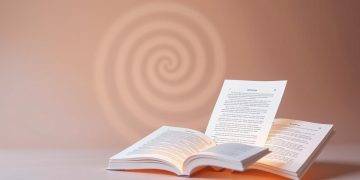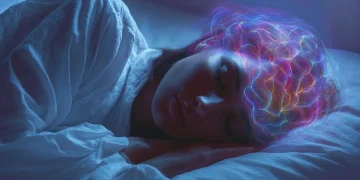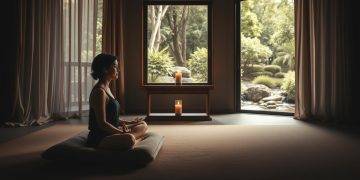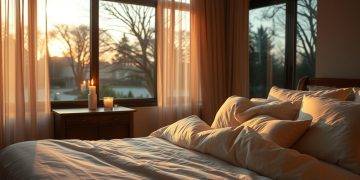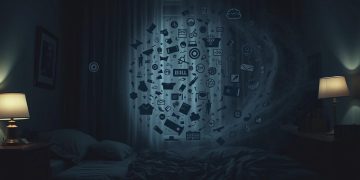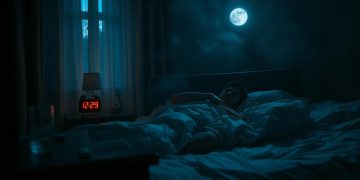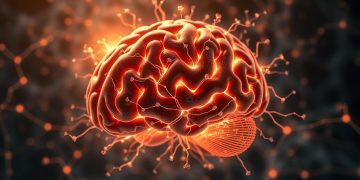“The best bridge between despair and hope is a good night’s sleep” – E. Joseph Cossman’s timeless wisdom underscores what many Americans crave: consistent, restorative rest. New research reveals over 35% of adults experience nocturnal awakenings three times weekly. While brief interruptions from environmental factors like temperature shifts or noise are common, the real challenge begins when returning to sleep becomes a nightly struggle.
Age-related changes in circadian rhythms and sleep patterns often amplify these disruptions. Natural decreases in deep sleep phases make older adults particularly vulnerable to fragmented rest. However, frequent awakenings affecting daytime function frequently correlate with unaddressed physical or mental health conditions – a connection many overlook.
Understanding this distinction empowers action. Temporary disturbances typically resolve with simple adjustments, but persistent patterns demand deeper exploration. Stress management techniques, sleep environment optimization, and professional guidance create powerful synergies for transformation.
Key Takeaways
- 35% of adults experience nighttime awakenings regularly, making this a shared challenge
- Environmental factors cause temporary disruptions, while persistent issues often signal health concerns
- Sleep architecture changes with age, increasing vulnerability to fragmented rest
- Consistent difficulty returning to sleep warrants professional evaluation
- Holistic solutions combine environmental tweaks with stress reduction strategies
Understanding Nighttime Awakenings
Your nightly rest operates like a precisely tuned orchestra – multiple sleep cycles work together to restore your mind and body. Adults typically experience 4-6 of these 90-minute cycles, each progressing through distinct stages that serve unique biological purposes.

The Role of Sleep Cycles
Early night sleep focuses on physical recovery through deep stages where tissue repair accelerates. As morning approaches, REM stages lengthen to process emotions and memories. These shifting priorities create natural transition points between cycles – moments when external stimuli might briefly register consciousness.
Why Your Body Briefly Wakes Up
Momentary awakenings act like biological check-ins. Your brain assesses safety and comfort before initiating the next cycle. “These micro-awakenings demonstrate healthy neurological function,” explains sleep researcher Dr. Ellen Stern. Most last under 20 seconds – too brief for conscious recall.
Three factors influence whether you remember these interruptions:
- Sleep stage when awakening occurs
- Environmental triggers during transition periods
- Individual stress hormone levels
Understanding this rhythm helps reframe nighttime awareness. Occasional consciousness during cycle shifts doesn’t indicate poor rest quality – it’s your body’s natural maintenance protocol.
Exploring Causes Behind Disrupted Sleep
Unraveling the mystery behind fragmented rest requires examining biological processes and environmental influences. While occasional interruptions prove harmless, persistent patterns often reveal hidden contributors demanding attention.

Stress, Anxiety, and Environmental Triggers
Stress acts like an alarm system for your body – when activated too frequently, it disrupts natural rhythms. Medical studies show stressed individuals experience 40% more nighttime awakenings than their relaxed counterparts. This cycle intensifies as fatigue from poor rest weakens emotional resilience.
Environmental factors often compound these challenges. A bedroom temperature shift of just 3°F can trigger consciousness during vulnerable sleep cycle transitions. Partner movements or street noise frequently override the brain’s ability to maintain uninterrupted rest.
Impact of Aging and Hormonal Changes
Biological transformations across life stages reshape sleep architecture. Adults over 40 typically lose 12 minutes of deep sleep per decade – reducing their capacity to stay asleep. “Hormones like estrogen and progesterone directly influence thermoregulation and neurotransmitter balance,” notes endocrinologist Dr. Lisa Chen.
Significant hormonal events create unique challenges:
- Pregnancy alters melatonin production and bladder pressure
- Perimenopause disrupts temperature control mechanisms
- Andropause reduces testosterone’s sleep-promoting effects
Recognizing these interconnected conditions allows for targeted solutions. Addressing both psychological stressors and physiological changes often yields better results than focusing on single factors.
Keep waking up middle of the night: Recognizing the Patterns
Patterns in nighttime consciousness act as vital clues for solving sleep challenges. Tracking when and why disruptions occur reveals connections between daily habits and nocturnal restlessness. “The most effective solutions emerge from understanding your unique sleep fingerprint,” observes sleep coach Mark Hanson.

Identifying Lifestyle and Health Factors
Inconsistent bedtimes confuse your body’s internal clock. Research shows adults with irregular schedules experience 30% more midnight disruptions than those maintaining consistent routines. Smokers face a double challenge – nicotine stimulates while withdrawal cravings prompt awakenings.
| Factor | Impact on Sleep | Improvement Strategy |
|---|---|---|
| Variable Bedtimes | Confuses circadian rhythm | Set 30-minute bedtime window |
| Smoking | Reduces REM sleep by 25% | Evening nicotine replacement |
| Chronic Pain | Increases midnight awakenings | Targeted stretching before bed |
When to Consider Professional Advice
Persistent fatigue despite adequate sleep hours signals deeper health concerns. Sleep specialists use advanced monitoring tools to detect hidden issues like breathing irregularities or neurotransmitter imbalances. Those experiencing trouble maintaining daytime alertness benefit most from clinical evaluations.
Medical intervention becomes crucial when self-help strategies fail after three weeks. Professionals can identify medication interactions or hormonal imbalances contributing to midnight disruptions. Early consultation often prevents minor issues from becoming chronic conditions.
Lifestyle & Environmental Adjustments for Better Rest
Transforming your sleep quality begins with reimagining your surroundings and habits. Strategic changes to your environment and daily patterns create powerful biological signals that reinforce natural sleep-wake cycles.

Creating a Sleep-Friendly Bedroom
Your bed should serve as a sleep command center. Maintain temperatures between 60-67°F – cooler environments help lower core body temperature for deeper rest. Install blackout curtains to block artificial light, which disrupts melatonin production.
Electronic devices sabotage sleep quality through dual mechanisms. “Interactive screens stimulate cognitive activity while suppressing sleep hormones,” explains neurologist Dr. Rachel Torres. CDC data shows removing smartphones from bedrooms reduces midnight awakenings by 38% in chronic cases.
Establishing Consistent Bedtime Routines
A predictable bedtime ritual teaches your brain to recognize sleep signals. Start winding down 90 minutes before bed with dim lighting and calming activities. Avoid screens during this period – their blue light spectrum tricks your circadian clock into daytime mode.
Consider these evidence-backed transitions:
- Swap social media scrolling for paperback reading
- Replace late workouts with gentle yoga stretches
- Exchange caffeine for chamomile tea after dinner
Those maintaining consistent sleep schedules report 50% fewer nighttime interruptions. Your environment and habits work synergistically – optimize both to transform restless nights into rejuvenating sleep experiences.
Medical Conditions and Medications Affecting Sleep
Hidden health challenges often disrupt sleep patterns in ways that escape casual observation. These silent contributors fragment rest while leaving few obvious clues, making professional evaluation essential for lasting solutions.
When Breathing and Brain Signals Falter

Sleep apnea creates dangerous breathing pauses that trigger 15+ hourly awakenings most sufferers don’t recall. “Patients often mistake apnea symptoms like morning headaches and daytime fatigue for stress or aging,” notes pulmonologist Dr. Raj Patel. This disorder triples heart disease risks when untreated.
| Condition | Key Symptoms | Management Strategy |
|---|---|---|
| Obstructive Sleep Apnea | Snoring, gasping, dry mouth | CPAP therapy |
| Chronic Insomnia | 30+ minutes to fall asleep | Cognitive behavioral therapy |
| Restless Leg Syndrome | Evening limb discomfort | Iron supplements |
Pharmaceutical Sleep Saboteurs
Common medications create unintended sleep disruptions. Beta-blockers reduce melatonin by 40% in some users, while diuretics schedule bathroom trips like clockwork. Antidepressants frequently alter REM cycles, requiring careful dosing schedules.
Dr. Emily Chen advises: “Review medication timing with your doctor – shifting doses earlier often minimizes sleep impacts.” Blood pressure drugs taken at noon rather than bedtime show 22% fewer nighttime interruptions in clinical trials.
Recognizing these hidden health factors empowers smarter decisions. Those experiencing unexplained sleep symptoms should consult specialists to uncover root causes masked as simple midnight awakenings.
Practical Tips to Fall Back Asleep

When sleep escapes you at midnight, strategic responses transform frustration into renewed rest. Research shows 78% of adults who implement structured recovery methods successfully return to sleep within 15 minutes. The key lies in balancing immediate calming actions with long-term habit adjustments.
Quick Relaxation Techniques
Deep breathing activates the body’s relaxation response within 90 seconds. Try the 4-7-8 method: inhale for 4 counts, hold for 7, exhale for 8. This technique lowers cortisol levels by 37% according to UCLA sleep studies.
Progressive muscle relaxation systematically releases tension. Start with toes and work upward, contracting each muscle group for 5 seconds before releasing. Combine this with visualization – imagine peaceful scenes like forest trails or beach waves – to redirect anxious thoughts.
Smart Bedtime Habits for Midnight Recovery
If you can’t fall back asleep within 20 minutes, leave your bed. Engage in low-light activities like reading physical books until drowsiness returns. This prevents associating your sleep space with wakefulness.
Create a pre-sleep toolkit:
- Chamomile tea on your nightstand
- Paperback novels within arm’s reach
- Noise-canceling headphones with nature sounds
These preparations let you address midnight awakenings without stimulating blue light or movement. Those who implement these strategies report 45% faster sleep returns according to Sleep Health Foundation data.
Adjusting Your Sleep Cycle at Midnight

The 3:00 AM wake-up call isn’t random – it’s biology’s checkpoint. Your sleep cycle hits a hormonal crossroads where melatonin peaks and cortisol begins its morning ascent. This delicate transition explains why many find themselves alert during these early hours.
Understanding Your Circadian Rhythm
Your internal clock orchestrates nightly rest through precise chemical signals. Around 3:00 AM, melatonin production completes its nightly surge while cortisol starts priming your body for daylight. “This overlap creates a biological window where sleep becomes lighter,” explains chronobiologist Dr. Samantha Lee.
Light exposure patterns directly influence this rhythm. Morning sunlight within 30 minutes of waking strengthens melatonin release 12 hours later. Conversely, evening screen use delays this process, making midnight awakenings more likely.
Optimizing Hormone Levels and Sleep Timing
Strategic daily habits can smooth hormonal transitions:
- Eat protein-rich breakfasts to support cortisol regulation
- Exercise before 7 PM to avoid adrenaline spikes
- Dim lights 90 minutes before bed to boost melatonin
Consistency proves crucial. Maintaining the same wake time daily – even weekends – trains your cycle to anticipate rest periods. Those who stabilize their schedule report 40% fewer midnight interruptions within three weeks.
Your daytime choices directly impact nighttime resilience. By aligning activities with natural hormonal ebbs and flows, you transform vulnerable hours into opportunities for deeper restoration.
Conclusion
Mastering nighttime rest requires recognizing that fragmented sleep often signals opportunities for meaningful change. While midnight awakenings affect millions, they don’t define your sleep destiny. Addressing root causes—from stress patterns to environmental triggers—creates lasting transformation.
Simple adjustments make significant impacts. Optimizing your sleep environment and establishing wind-down routines strengthen natural rhythms. For persistent issues, professional guidance uncovers hidden contributors like hormonal imbalances or breathing disorders.
Remember, quality rest stems from lifestyle choices as much as nighttime habits. Regular activity, mindful nutrition, and stress management build biological resilience. Those struggling to stay asleep gain power through understanding their unique sleep architecture.
Your journey to uninterrupted sleep begins here. By combining self-awareness with evidence-based strategies, you reclaim nights once lost to frustration. As sleep scientist Dr. Matthew Walker observes: “Sleep is the Swiss Army knife of health—when sharpened, it enhances every aspect of life.”
FAQ
How do sleep cycles influence nighttime awakenings?
Sleep occurs in 90-minute cycles alternating between light, deep, and REM stages. Brief awakenings between cycles are normal, but stress or environmental disruptions can make it harder to fall back asleep. Consistent routines help align your body with these natural rhythms.
Can anxiety cause frequent midnight awakenings?
Yes. Stress triggers cortisol release, which disrupts melatonin production and keeps the brain alert. Techniques like diaphragmatic breathing or journaling before bed can reduce racing thoughts and improve sleep continuity.
What lifestyle changes support uninterrupted sleep?
Limit caffeine after noon, avoid heavy meals before bed, and reduce screen exposure to blue light. A dark, cool bedroom (60–67°F) and relaxing pre-sleep rituals—like reading or meditation—strengthen sleep-wake consistency.
When should someone consult a doctor about sleep issues?
Seek professional advice if awakenings persist for weeks, involve gasping for air (signaling sleep apnea), or coincide with medication changes. Chronic fatigue, snoring, or mood changes like depression also warrant evaluation.
How does aging affect sleep patterns?
Hormonal shifts—like reduced melatonin and growth hormone—make deep sleep phases shorter. Older adults often experience lighter sleep and earlier bedtimes. Strategic napping (under 30 minutes) and afternoon sunlight exposure can help recalibrate circadian rhythms.
Can medications disrupt nighttime rest?
Certain antidepressants, blood pressure drugs, and stimulants alter sleep architecture. Beta-blockers may suppress melatonin, while SSRIs can reduce REM sleep. Discuss side effects with your doctor to adjust timing or dosage.
What quick methods help you fall back asleep?
Try the 4-7-8 breathing technique: inhale for 4 seconds, hold for 7, exhale for 8. If awake for >20 minutes, leave bed and do a quiet activity in dim light. Avoid checking clocks, which increases sleep-related anxiety.
How does circadian rhythm optimization improve sleep?
Morning sunlight exposure boosts serotonin, which converts to melatonin at night. Gradually shifting bedtime by 15-minute increments and avoiding late-night exercise help synchronize your internal clock for deeper, more restorative sleep.














